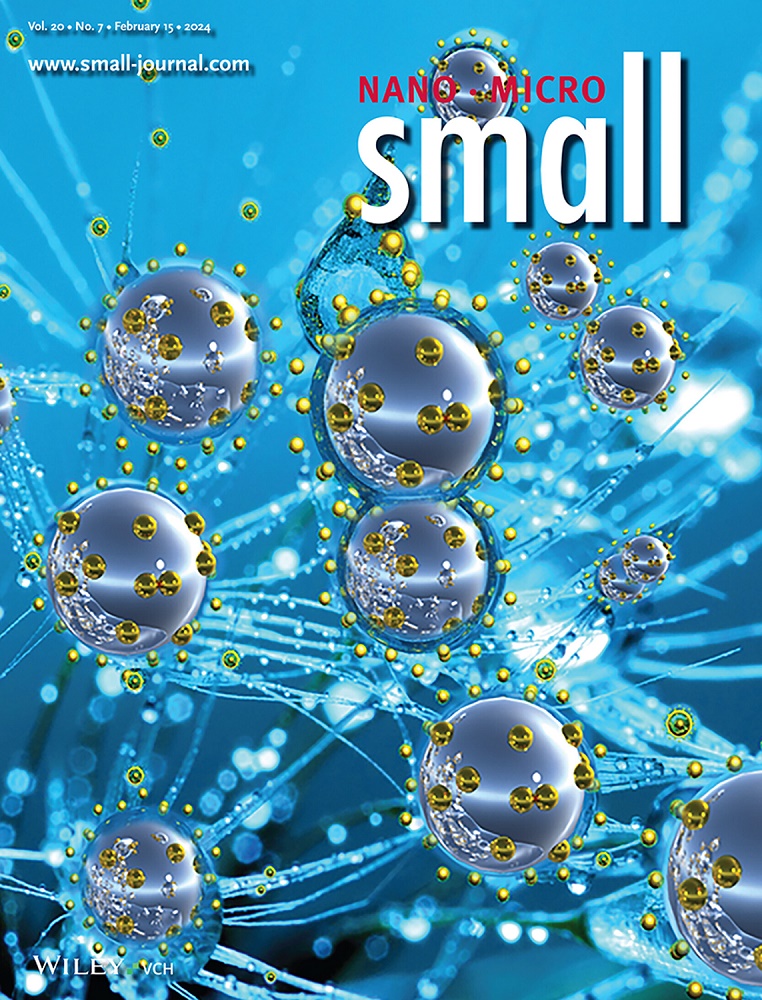Bioinspired Unidirectional 3D Scaffold for Synergistic Enhanced Solar Evaporation and Efficient VOCs Degradation.
IF 12.1
2区 材料科学
Q1 CHEMISTRY, MULTIDISCIPLINARY
引用次数: 0
Abstract
3D design has effectively enhanced photothermal materials water evaporation performance via utilizing side surfaces. However, for photothermal/photocatalytic composite evaporators which can effectively degrade volatile organic compounds (VOCs) to prevent their contamination in condensate, introducing 3D design should promote VOCs escaping from the evaporator sides surface, reducing efficiency of VOCs photocatalytic degradation. Herein, a bioinspired unidirectional silk fibroin (SF)-Ag2S/Ag3PO4 3D evaporator is reported to achieve synergy between enhancing water evaporation and maintaining VOCs photocatalytic degradation efficiency. The unidirectional channels are modified with Ag2S/Ag3PO4 composite as both photothermal and photocatalytic agents. By promoting directional water transfer, the bioinspired unidirectional scaffold achieves an evaporation rate of 2.86 kg m-2 h-1 under 1 sun with the assistance of side-surface evaporation. Furthermore, the unidirectional channels effectively restrict the horizontal migration and the escape of VOCs from side surface, directing their transport toward the top surface, where the VOCs can be photocatalytically degraded by Ag2S/Ag3PO4 composite. Accordingly, bioinspired SF-Ag2S/Ag3PO4 scaffold maintains 91.9% VOCs removal performance under 1 sun in 10 mg L-1 phenol-contaminated water. Moreover, compared with the evaporator without directional VOCs transportation, bioinspired scaffold shows 96% and 41% increase in VOCs removal and water evaporation, respectively, under 2 suns in 100 mg L-1 phenol solution.生物启发的单向3D支架协同增强太阳能蒸发和有效的挥发性有机化合物降解。
三维设计通过利用侧面,有效地提高了光热材料的水分蒸发性能。然而,对于能够有效降解挥发性有机化合物(VOCs)以防止其污染冷凝水的光热/光催化复合蒸发器来说,引入3D设计会促进VOCs从蒸发器侧面逃逸,降低VOCs光催化降解效率。本文报道了一种仿生单向丝素(SF)-Ag2S/Ag3PO4 3D蒸发器,实现了增强水分蒸发和维持VOCs光催化降解效率的协同作用。用Ag2S/Ag3PO4复合材料作为光热剂和光催化剂对单向通道进行改性。通过促进定向水传递,仿生单向支架在侧面蒸发的帮助下,在一个太阳下实现了2.86 kg m-2 h-1的蒸发速率。此外,单向通道有效地限制了VOCs从侧表面的水平迁移和逃逸,引导其向顶表面迁移,并在顶表面被Ag2S/Ag3PO4复合材料光催化降解。因此,生物激发的SF-Ag2S/Ag3PO4支架在10 mg L-1苯酚污染的水中,在1个太阳下保持91.9%的VOCs去除性能。与无定向输送VOCs的蒸发器相比,在100mg L-1苯酚溶液中,生物支架在2个太阳下对VOCs的去除率和水分蒸发分别提高了96%和41%。
本文章由计算机程序翻译,如有差异,请以英文原文为准。
求助全文
约1分钟内获得全文
求助全文
来源期刊

Small
工程技术-材料科学:综合
CiteScore
17.70
自引率
3.80%
发文量
1830
审稿时长
2.1 months
期刊介绍:
Small serves as an exceptional platform for both experimental and theoretical studies in fundamental and applied interdisciplinary research at the nano- and microscale. The journal offers a compelling mix of peer-reviewed Research Articles, Reviews, Perspectives, and Comments.
With a remarkable 2022 Journal Impact Factor of 13.3 (Journal Citation Reports from Clarivate Analytics, 2023), Small remains among the top multidisciplinary journals, covering a wide range of topics at the interface of materials science, chemistry, physics, engineering, medicine, and biology.
Small's readership includes biochemists, biologists, biomedical scientists, chemists, engineers, information technologists, materials scientists, physicists, and theoreticians alike.
 求助内容:
求助内容: 应助结果提醒方式:
应助结果提醒方式:


